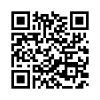Applying the ‘BUCS’ strategy in grade IV of Elementary School to learn main ideas and supporting details
Belladina Nasution, SDIT Nurul Ilmi Medan, Indonesia
Supartinah Supartinah, Yogyakarta State University, Indonesia
Abstract
This study aims to improve learning activities and the ability to determine the main and supporting ideas through the application of the BUCS earning strategy that includes Baca (read), Uraikan (transform), Cermati (observe), Sampaikan (convey) in grade IV of Islamic Elementary School (IES) SDIT Nurul ‘Ilmi, Medan. Classroom action research employed in this study refers to the Kemmis & Taggart model whose cycle includes planning, observation, and reflection. The research subjects were 21 students of fourth graders of the IES, whiles the objects studied were learning activities and the ability to determine the main ideas and supporting details in reading texts in the Indonesian language. Data were collected through observation sheets and tests and were analyzed by using qualitative descriptive analysis. The results show that (1) the means for learning activities of Grade IV students at SDIT Nurul ‘Ilmi likely indicated a modest increase from 72% to 77%. (2) Besides, students’ skills in identifying main ideas and supporting details likewise experienced a noticeable upturn. The means for this variable in the pretest was 57, which then escalated to 61 in cycle 1 and 89 in cycle 2, respectively.English translation.
Keywords: BUCS learning strategy, main ideas and supporting details, elementary school
Keywords
Full Text:
PDFReferences
Apryliana, A. (2020). Keefektifan pendekatan cooperative integrated reading and composition (circ) dalam pembelajaran membaca sastra, Diksi, 28(1). https://doi.org/10.21831/diksi.v28i1.29869.
Chien, C. W. (2012). Use of graphic organizers in a language teachers’ professional development. English Language Teaching, 5(10). https://doi.org/10.5539/elt.v5n10p49.
Christina, L. V. & Kristin, F. (2016). Efektivitas model pembelajaran tipe group investigation (GI) dan cooperative integrated reading and composition (CIRC) dalam meningkatkan kreatifitas berpikir kritis dan hasil belajar IPS siswa kelas 4. Scholaria: Jurnal Pendidikan dan Kebudayaan, 6(3), 9-28.
Ernest, Y. K. & Nurgiyantoro, B. (2018). Kajian ekranisasi: Dari novel Pintu Terlarang ke film Pintu Terlarang. Diksi, 26(2), 120–127. https://journal.uny.ac.id/index.php/diksi/article/view/ 15494/12449.
Hamalik, O. (2009). Psikologi Belajar dan Mengajar. Bandung: Sinar Baru Algensindo.
Huda, M. (2015). Model-Model pengajaran dan Pembelajaran: Isu-Isu Metodis dan Paradigmatis. Yogyakarta: Pustaka Pelajar.
Jahanbakhsh, A. A., AliAsgariZamani, M., & Garman, Z. (2019). CIRC and STAD in Iranian context: Through the five elements to cooperative learning of lexical collocations. Cogent Arts & Humanities, 6(1), 1692469.
Mullis, I. V. S., Martin, M. O., Sainsbury, M. (2016). PIRLS 2016 Reading Framework. https://timssandpirls.bc.edu/pirls2016/downloads/P16_FW_Chap1.pdf.
Namaziandost, E., Neisi, L., Kheryadi, & Nasri, M. (2019). Enhancing oral proficiency through cooperative learning among intermediate EFL learners: English learning motivation in focus. Cogent Education, 6(1). https://doi.org/10.1080/2331186X.2019.1683933.
Palupi, P. & Laila. A., & Santi, N. N. (2020). Analisis kemampuan mencermati gagasan pokok dan gagasan pendukung dari teks tulis melalui model pembelajaran cooperative, integrated, reading, and composition (CIRC). Jurnal Jurnal Pendidikan dan Pembelajaran Dasar, 7(2), 119-134.
Santoso, I., (2005). Mind map dalam pengajaran keterampilan menulis dan membaca. Diksi, 12(2). https://doi.org/10.21831/diksi.v12i2.5275.
Sardiman, A. M., (2006). Interaksi dan Motivasi Belajar-Mengajar. Jakarta: PT Raja Grafindo Persada.
Slavin, E. R., (2005). Cooperative Learning Teori. Bandung: Nusa Media.
Sugirin, S. (2015). Hakikat membaca dan implikasinya bagi pengajaran. Diksi. 13(5). https://doi.org/10.21831/diksi.v13i5.6989
Sumarwati, S. & Purwadi, P. (2010). Pembuatan pertanyaan awal pada kegiatan prabaca untuk meningkatkan kemampuan membaca intensif. Diksi, 17(1). https://doi.org/10.21831/diksi.v17i1.6573.
Suprijono, A. (2010). Cooperatif Learning Teori dan Aplikasi PAIKEM. Yogyakarta: Pustaka Belajar.
Suprijono, A., (2010). Cooperative Learning. Yogyakarta: Pustaka Pelajar.
Susilo, A., Mufanti, R., & Fitriani, A. (2021). Promoting EFL students’ critical thinking and self-voicing through CIRC technique in Academic Writing courses. Studies in English Language and Education, 8(3), 917–934.
Susiprayati, N. K., Arini, N.W., & Suwatra, I.I.W. (2014). Penerapan model pembelajaran CIRC untuk meningkatkan hasil belajar membaca pemahaman wacana narasi siswa kelas V SD No. 3 Panji Anom. MIMBAR PGSD UNDIKSHA. 2 (1). http://dx.doi.org/10.23887/jjpgsd.v2i1.
Tristiantari, N. D. & Sumatri, I. M. (2016). Model pembelajaran cooperatif integrated reading composition berpola lesson study meningkatkan keterampilan membaca dan menulis. Jurnal Pendidikan Indonesia, 5(2), 203-211.
UNESCO. (2004). Teaching reading in primary schools. https://pdf4pro.com/download/teaching-reading-in-primary-schools-2004-unesco-474007.html.
Winkel, W. S. (1983). Psikologi Pengajaran. Jakarta: PT Gramedia Widia Sarana Indonesia.
Wulandari, N. & Mashuri, M. (2014). Kefektifan pembelajaran CIRC dengan pendekatan open-ended terhadap kemampuan berpikir kreatif siswa kelas VIII materi kubus balok. UJME: Unnes Journal of Mathematics Education, 3(3), 231-240.
Yamin, M. (2007). Profesionalisasi Guru & Implementasi KTSP. Jakarta: Gaung Persada Press.
Yusuf, M., (1982). Pengantar Ilmu Pendidikan. Jakarta: Ghalia.
DOI: https://doi.org/10.21831/diksi.v30i2.33025
Refbacks
- There are currently no refbacks.

This work is licensed under a Creative Commons Attribution-ShareAlike 4.0 International License.
Jurnal Diksi is published by Faculty of Languages, Arts, and Culture, Universitas Negeri Yogyakarta. It is licensed under a Creative Commons Attribution-ShareAlike 4.0 International License. Based on a work at http://journal.uny.ac.id/index.php/diksi
Our Journal has been Indexed by:
Diksi Journal is published by the Faculty of Languages and Arts Universitas Negeri Yogyakarta in collaboration with Himpunan Sarjana Kesusasteraan Indonesia (HISKI)
Supervised by:






2.png)










